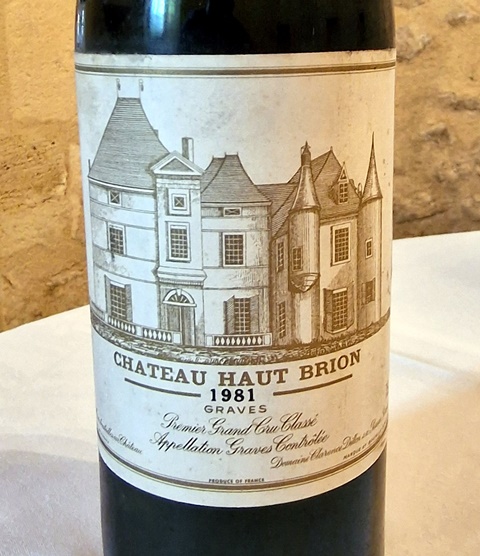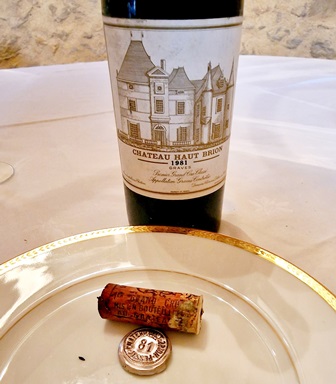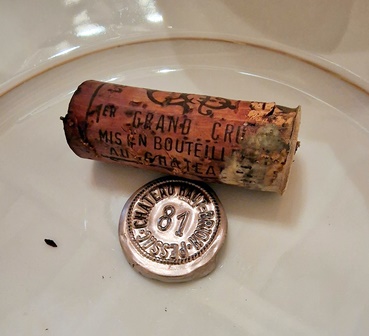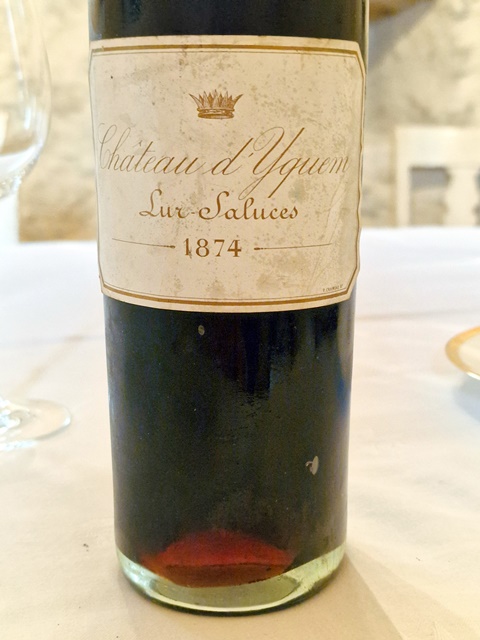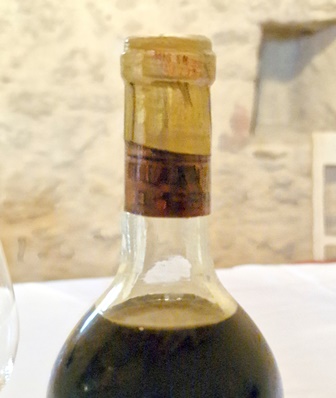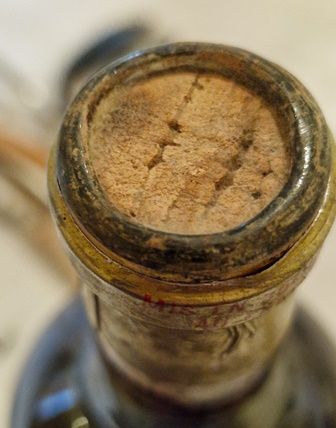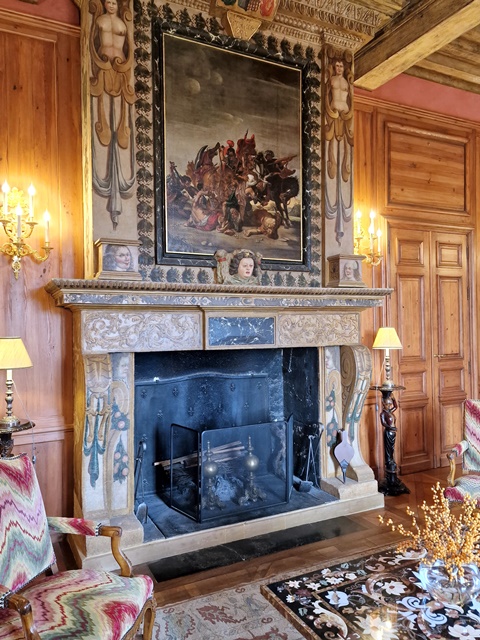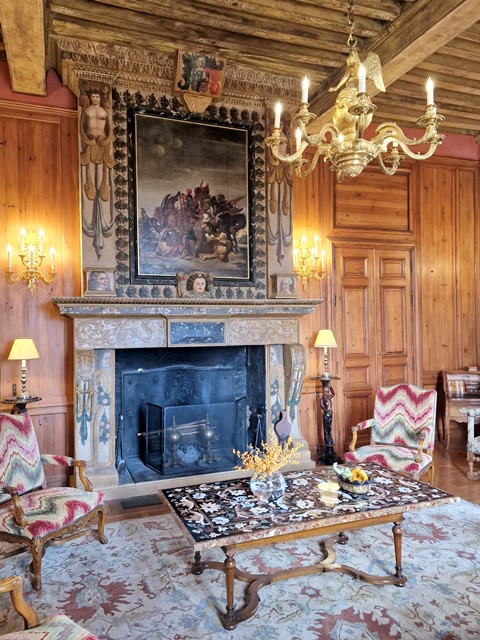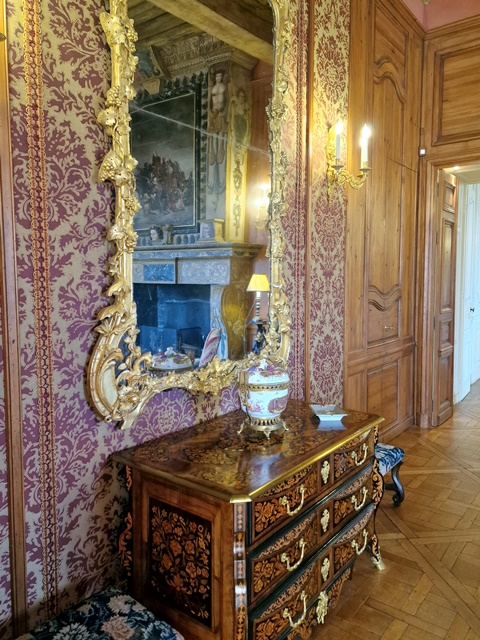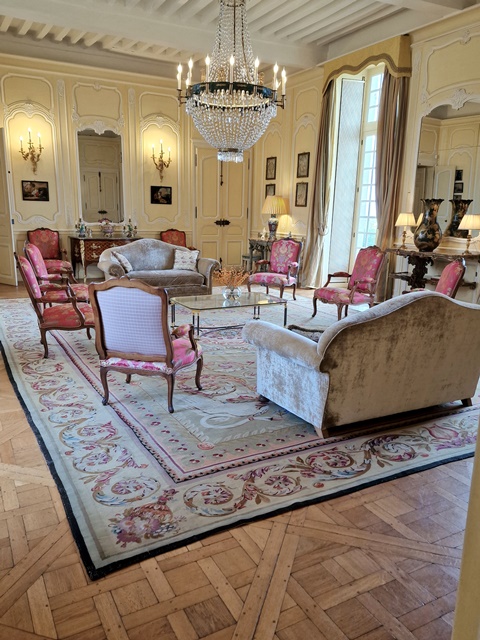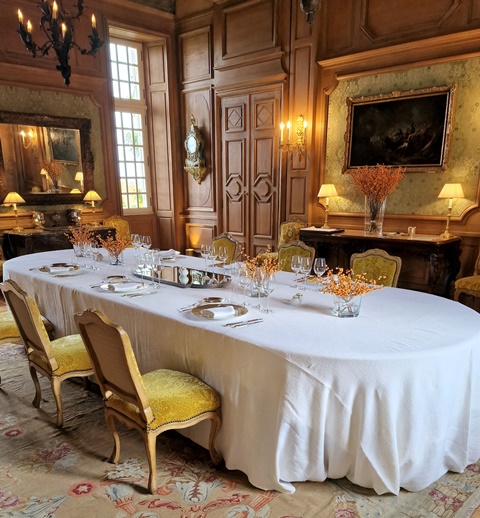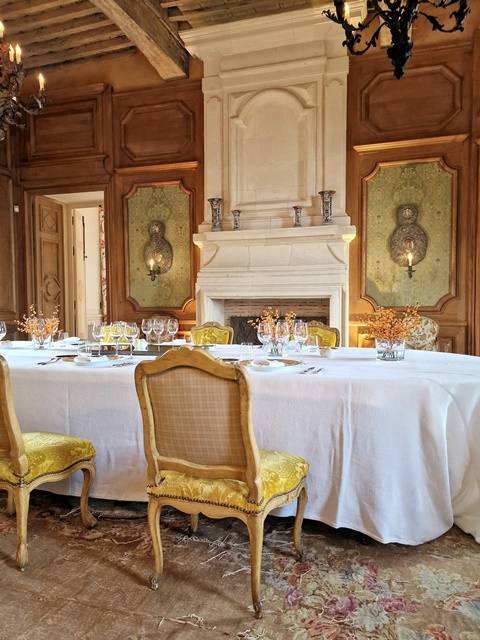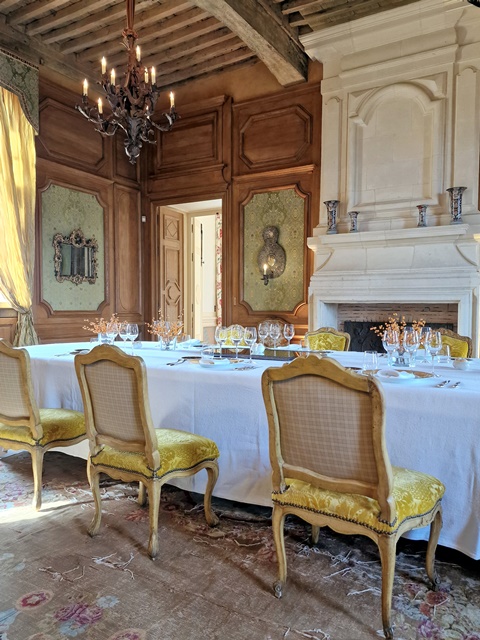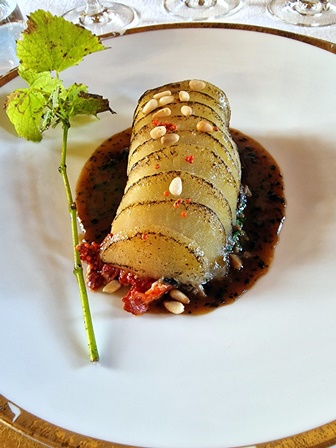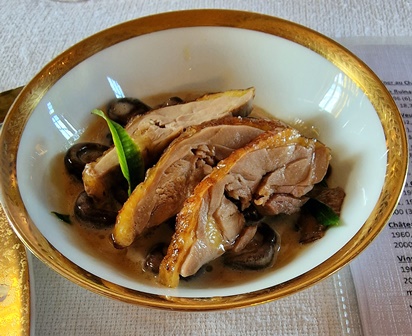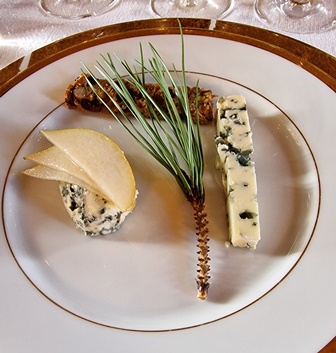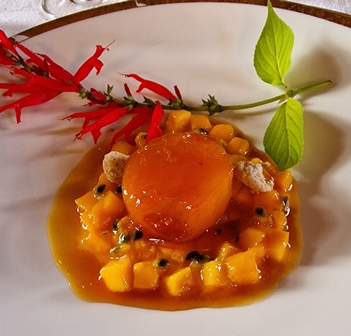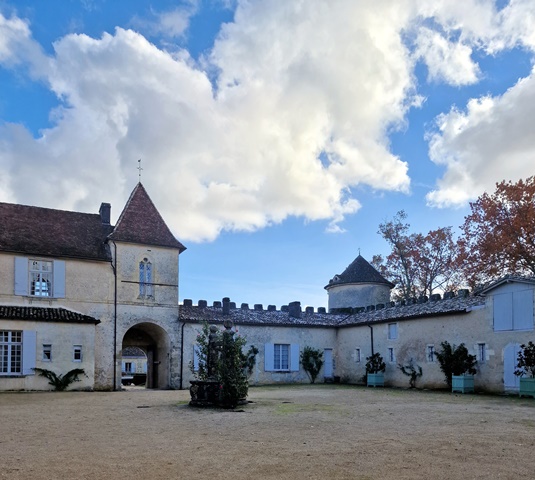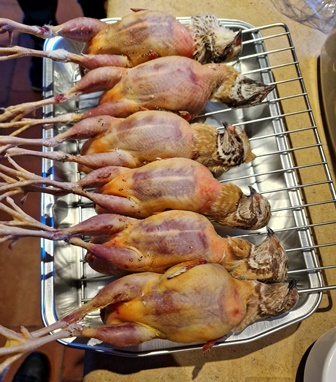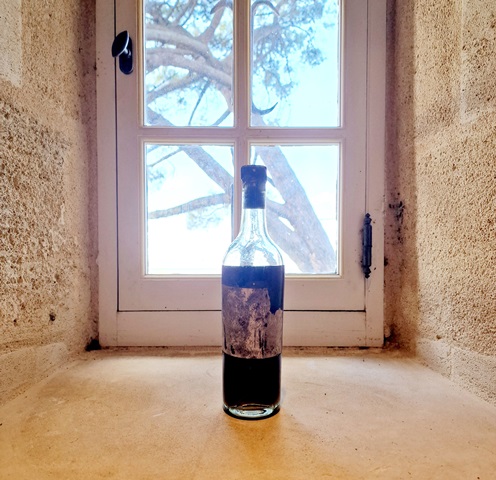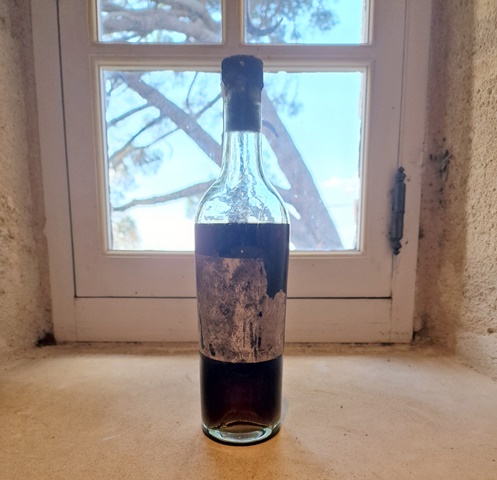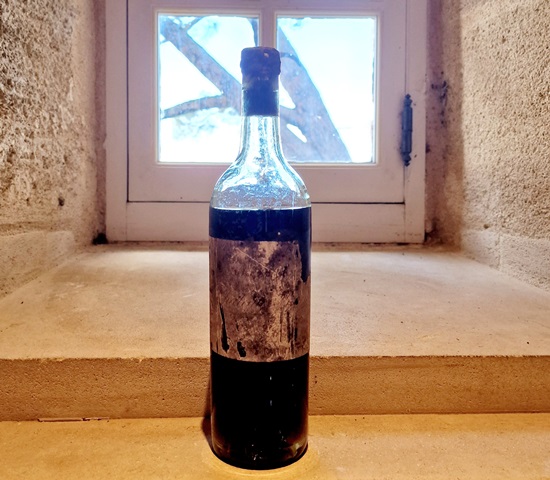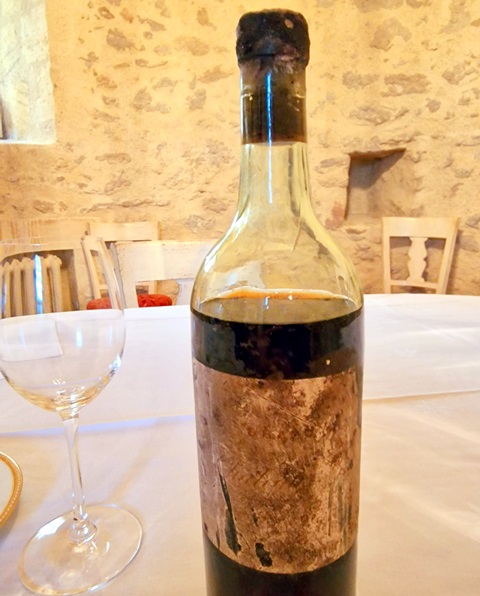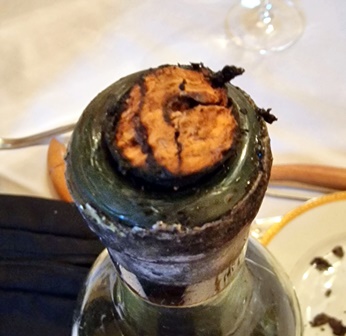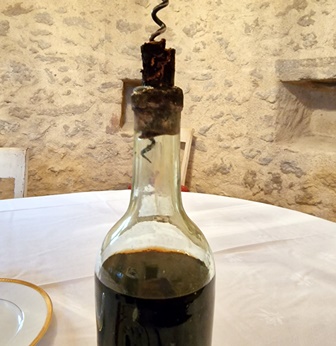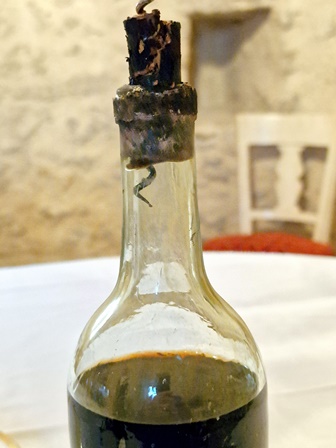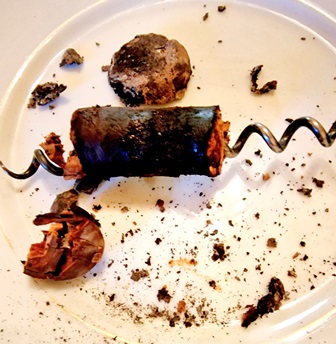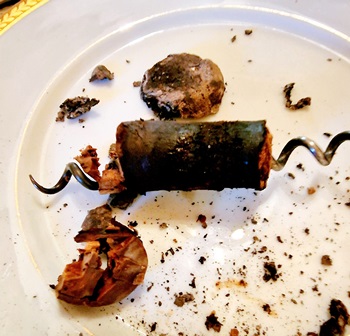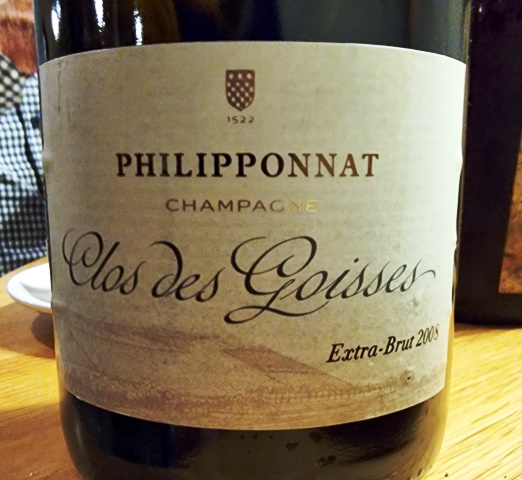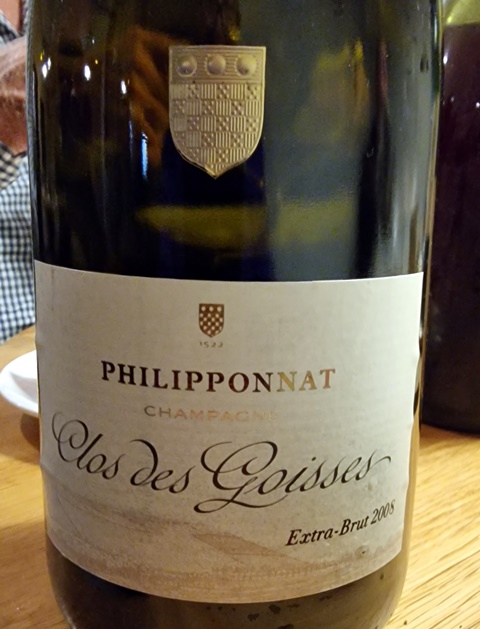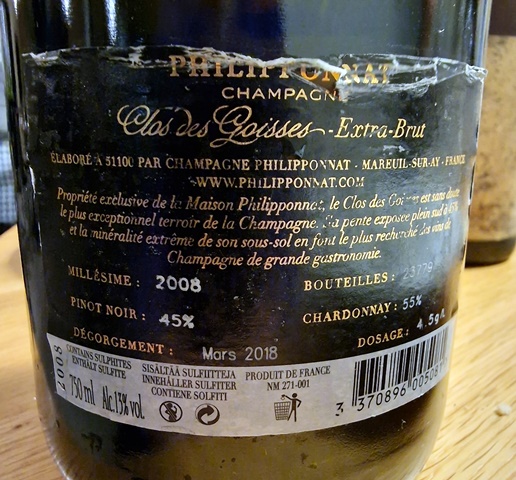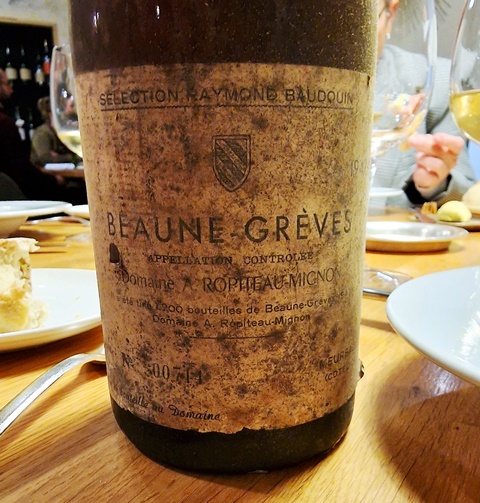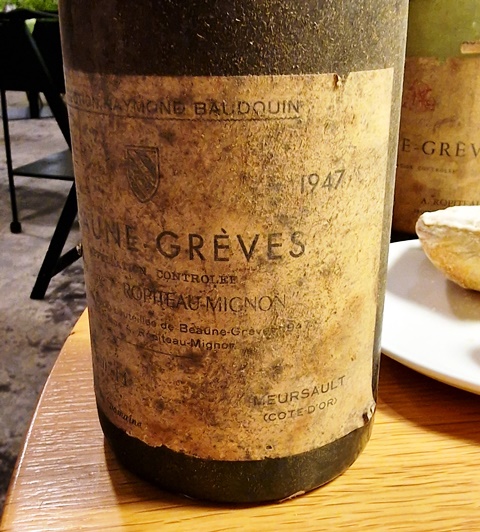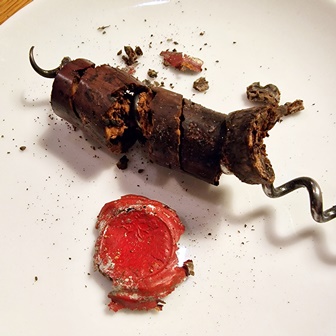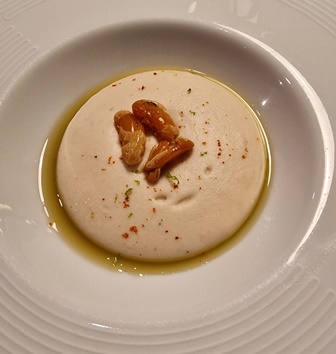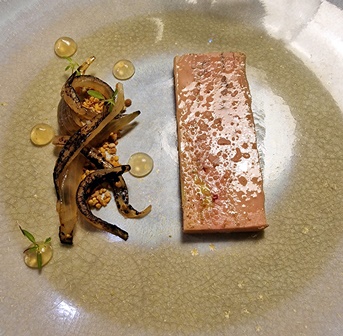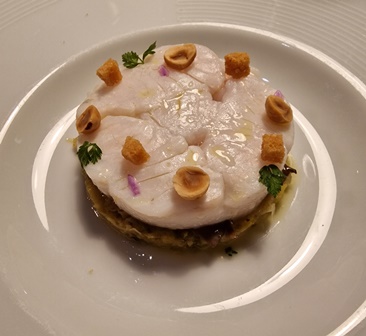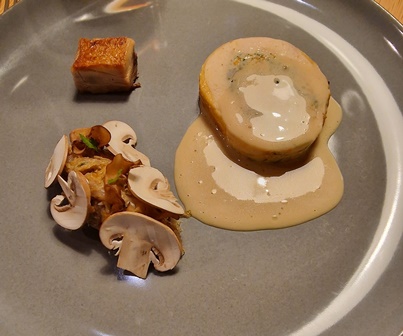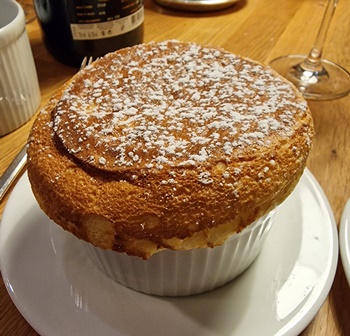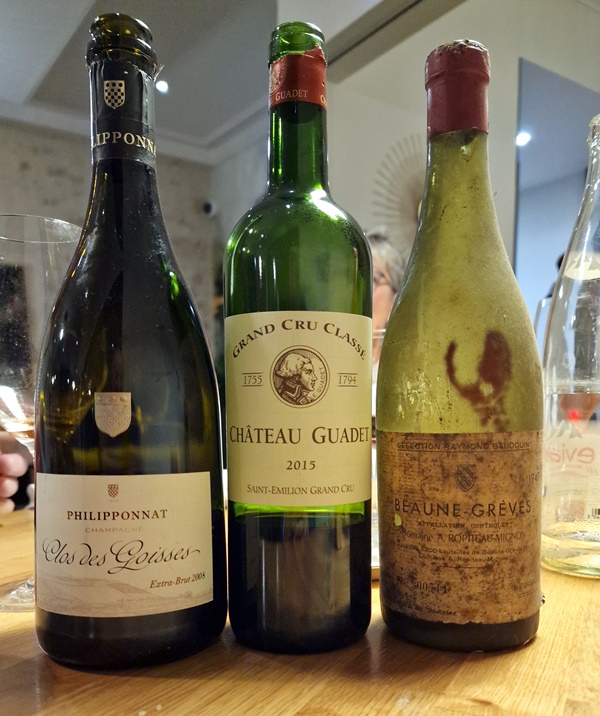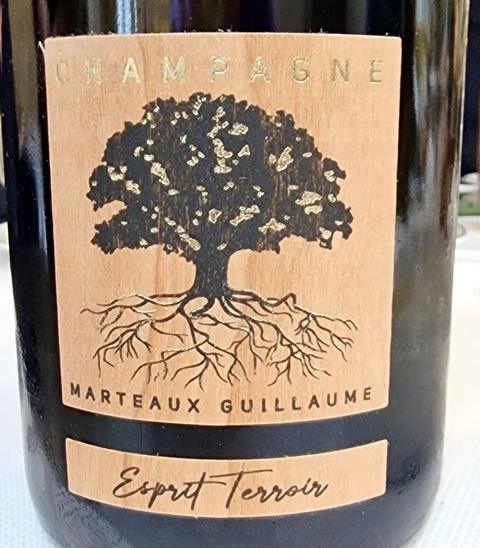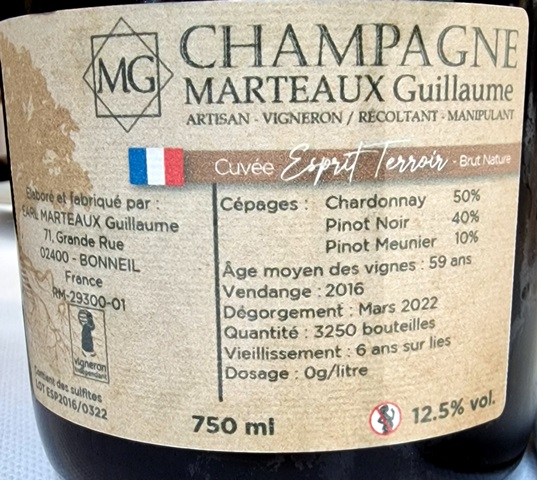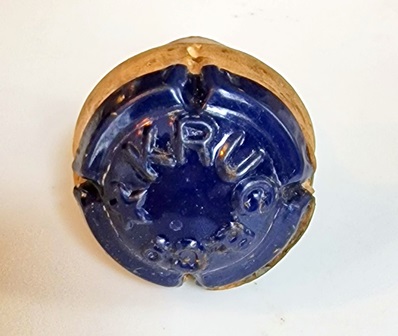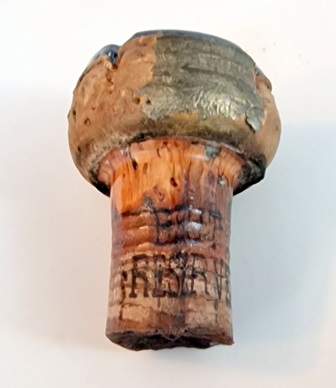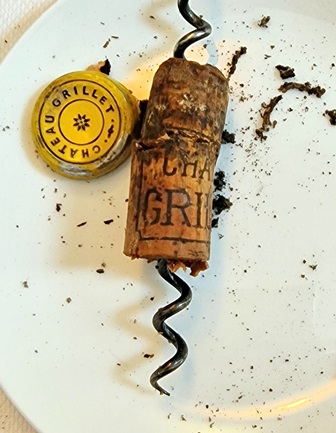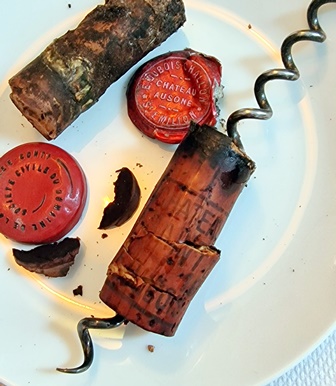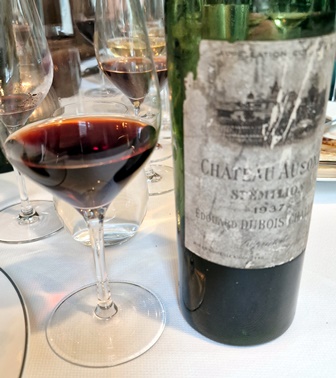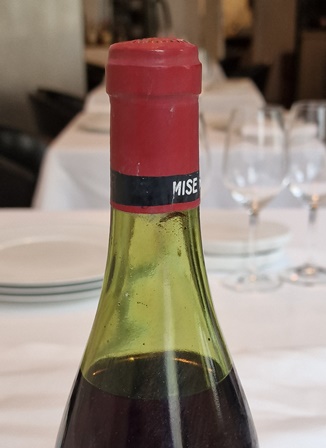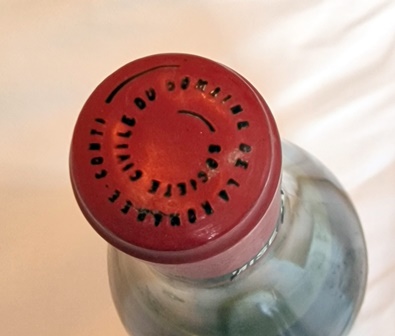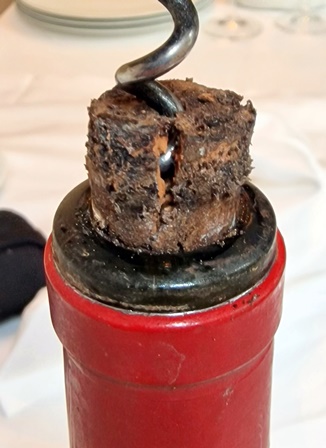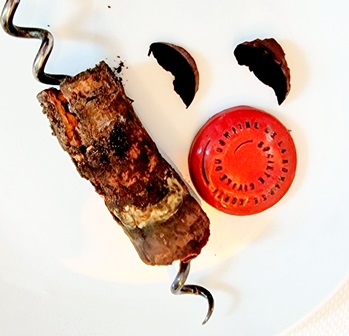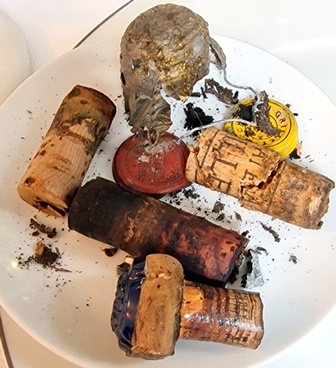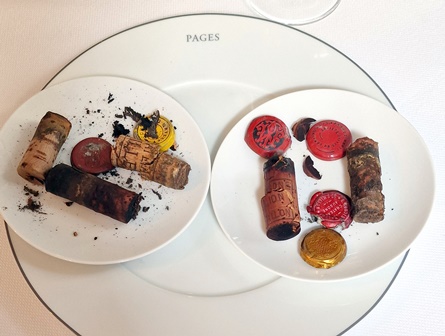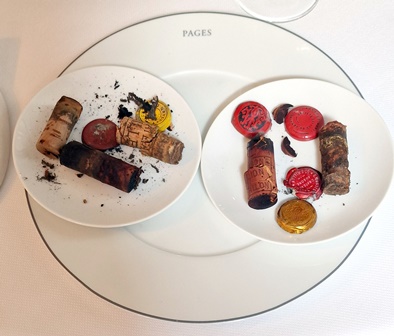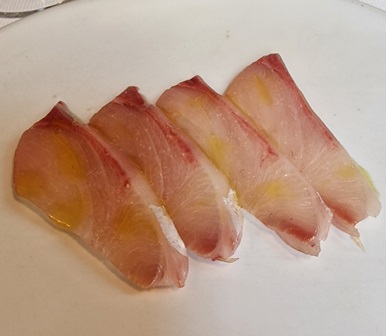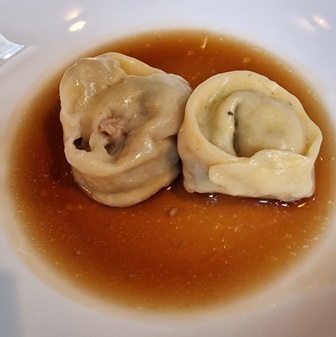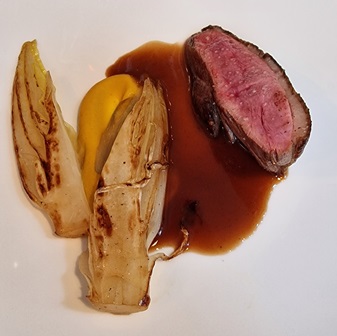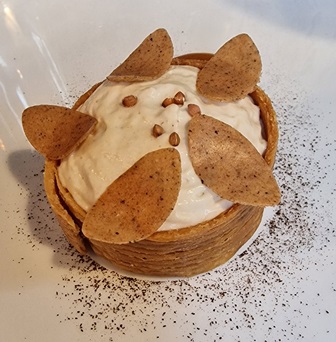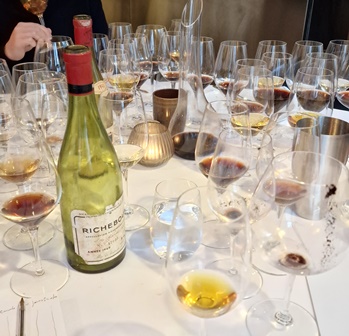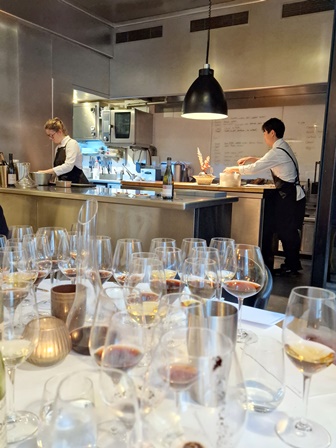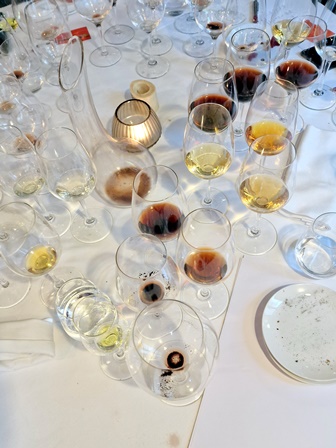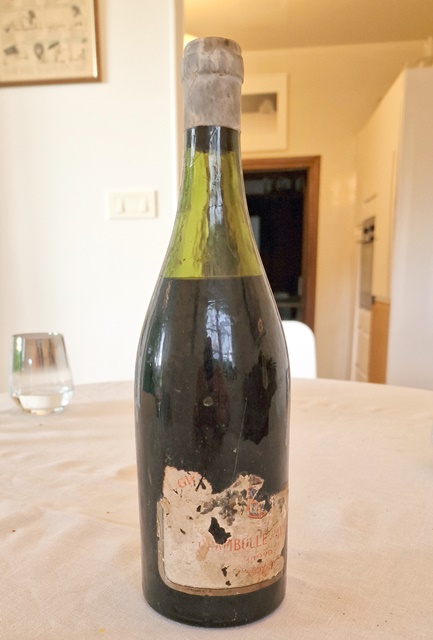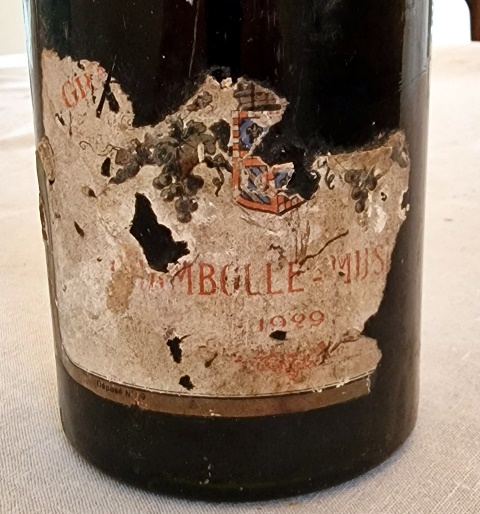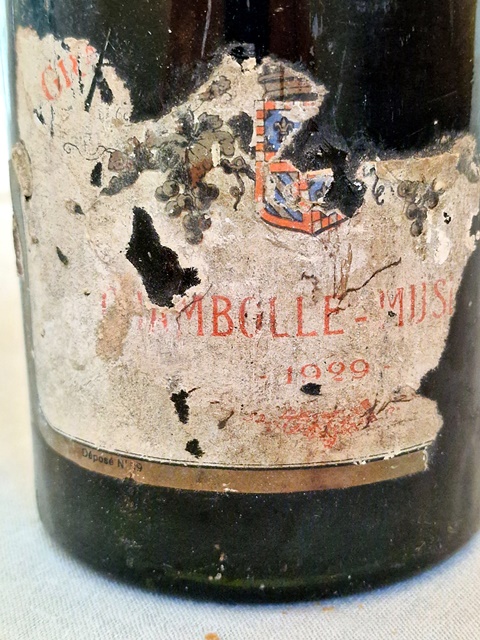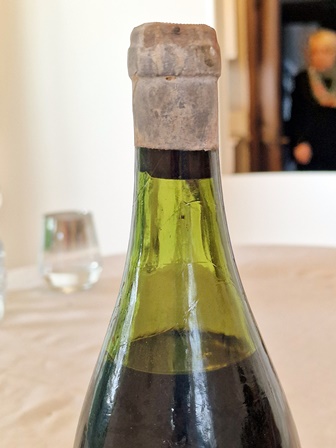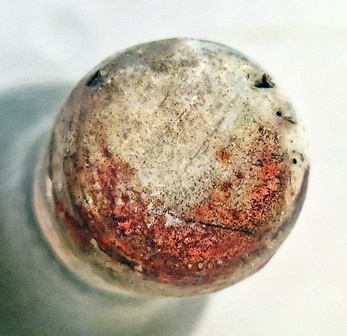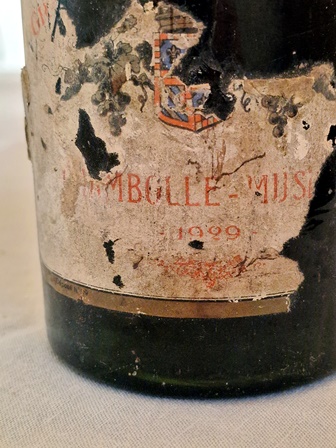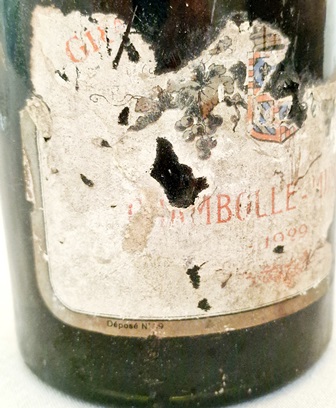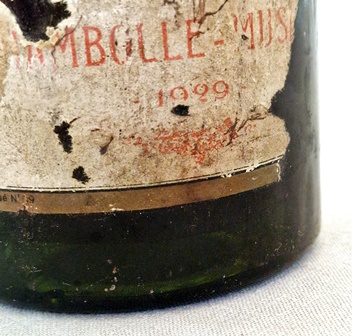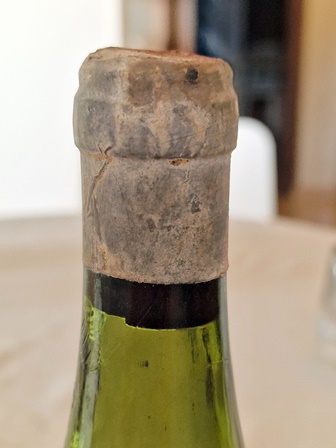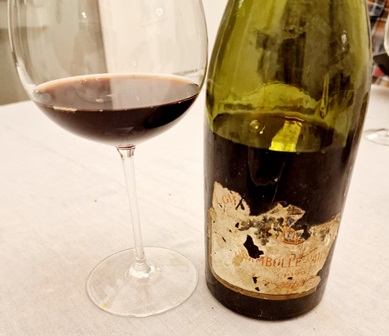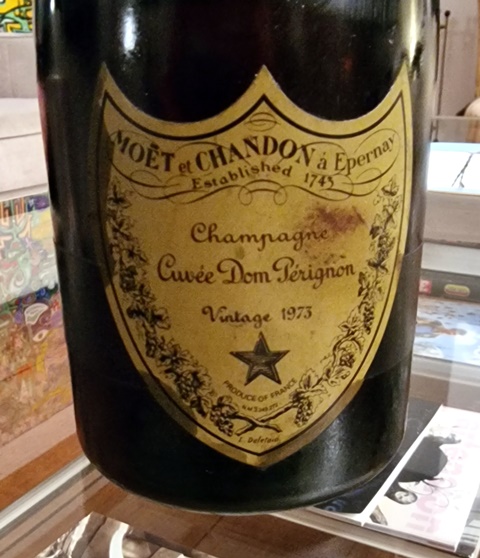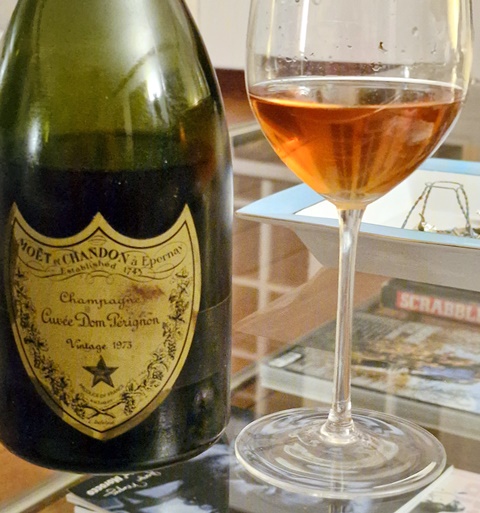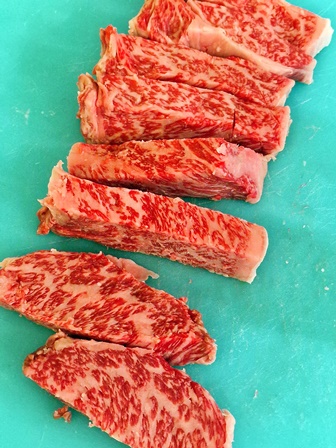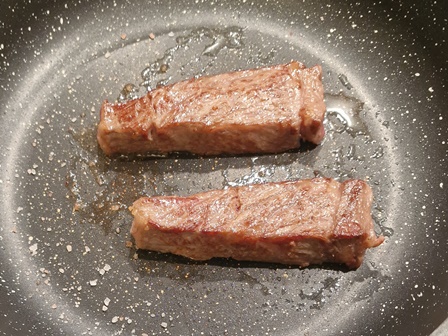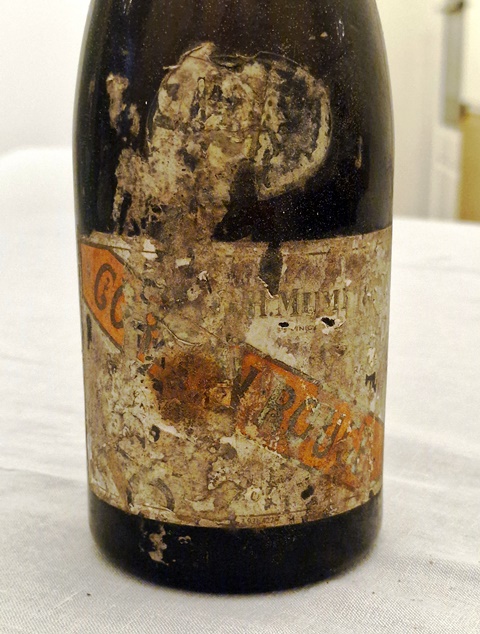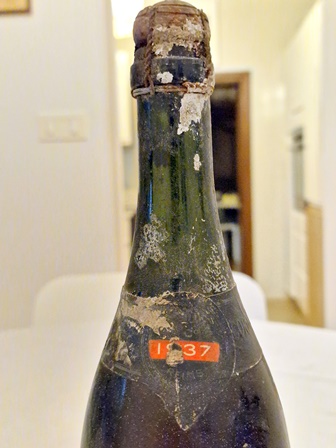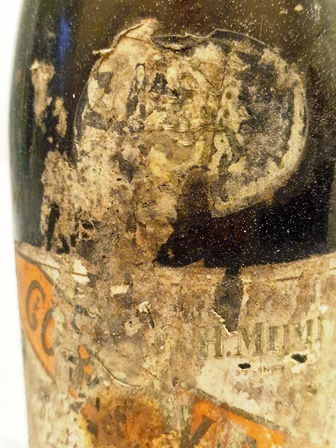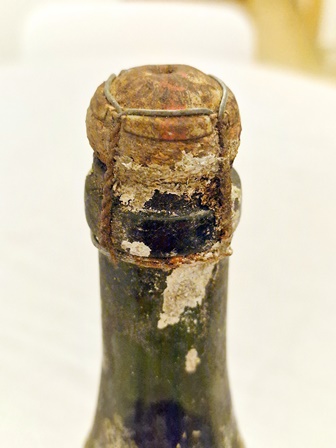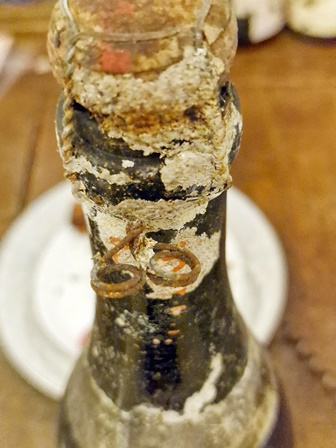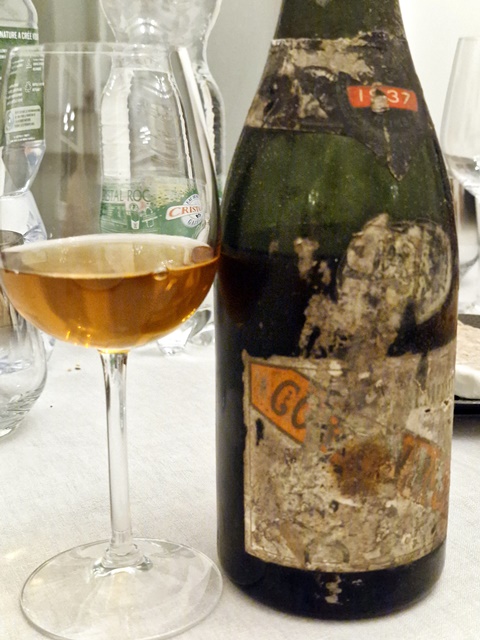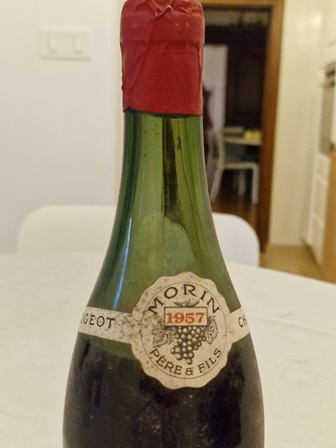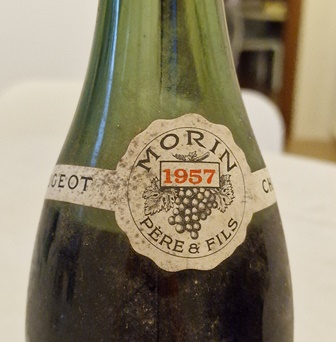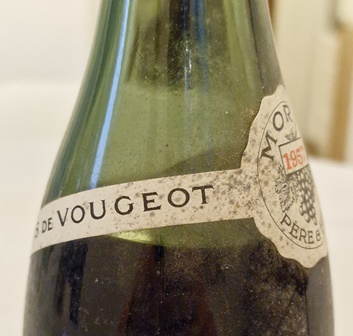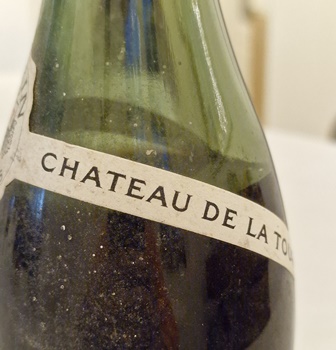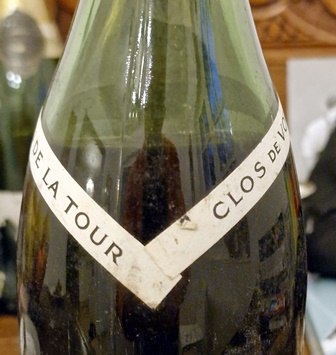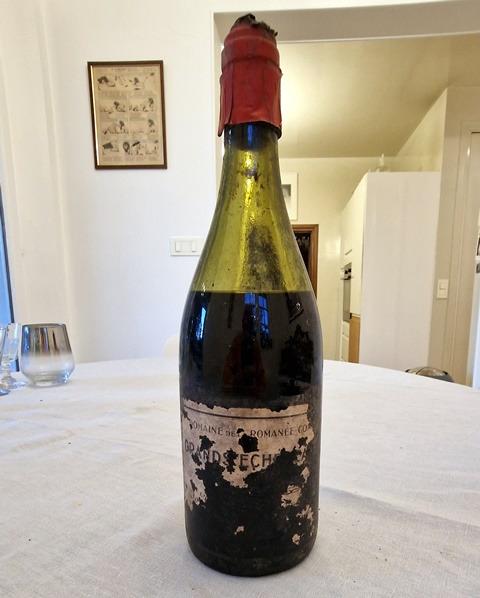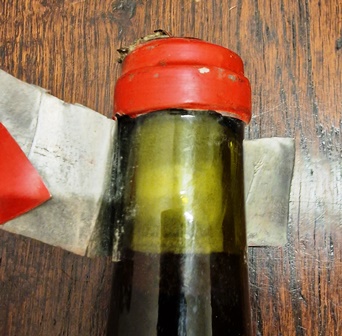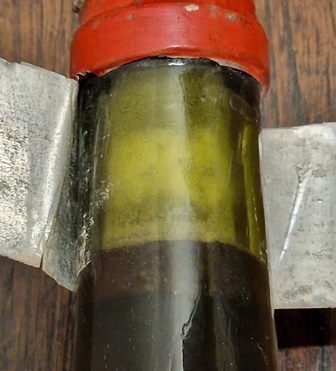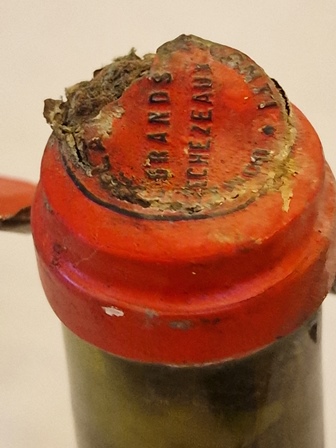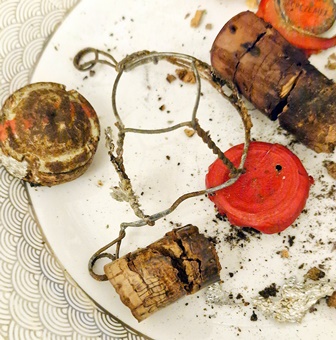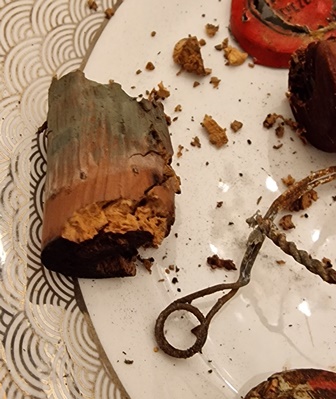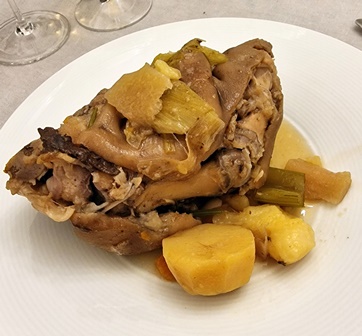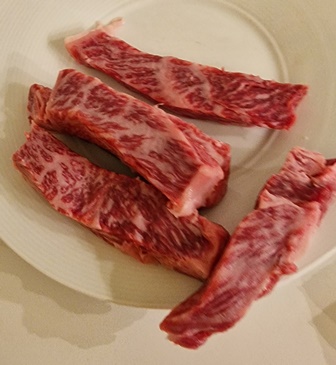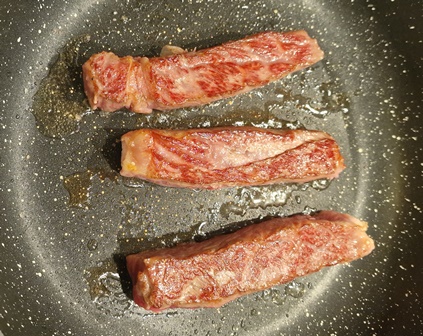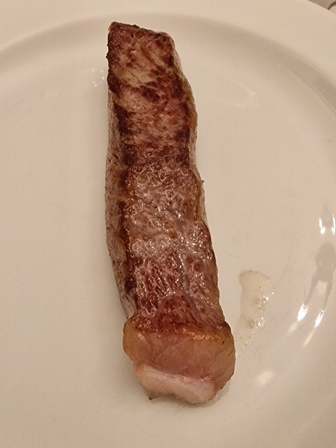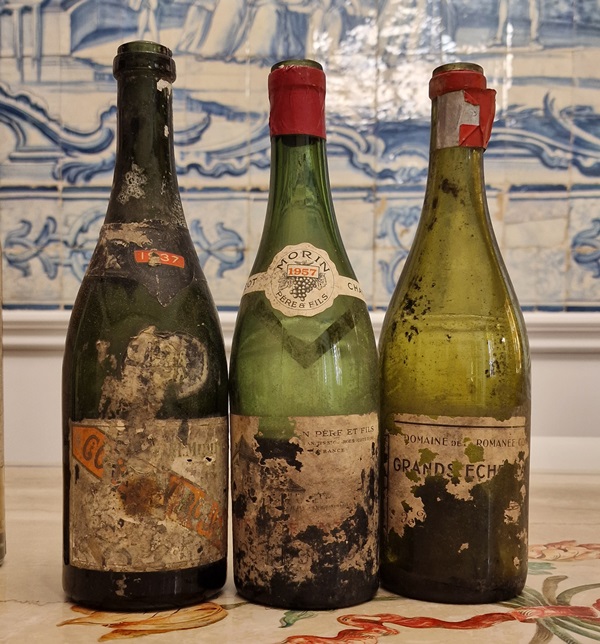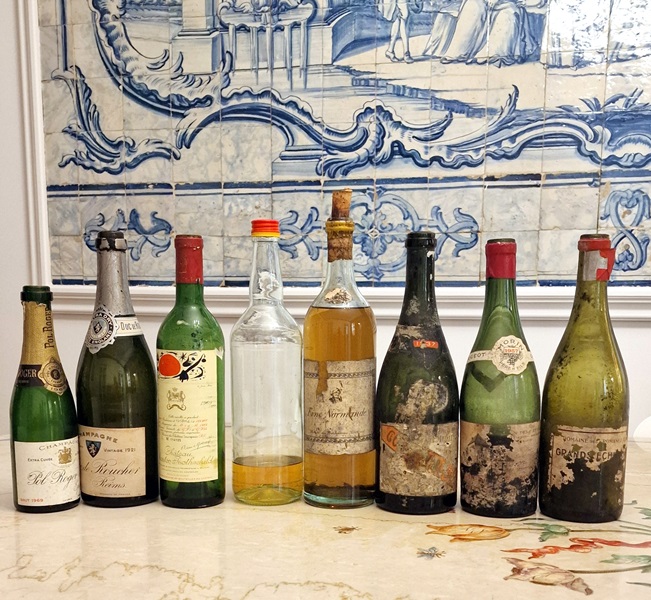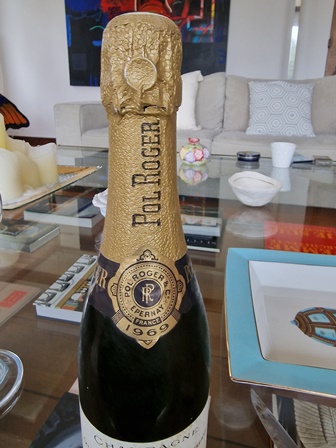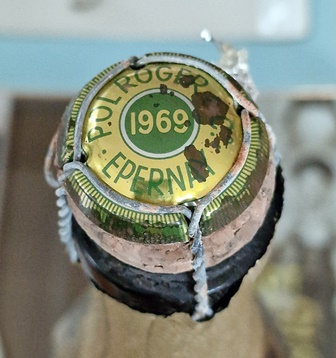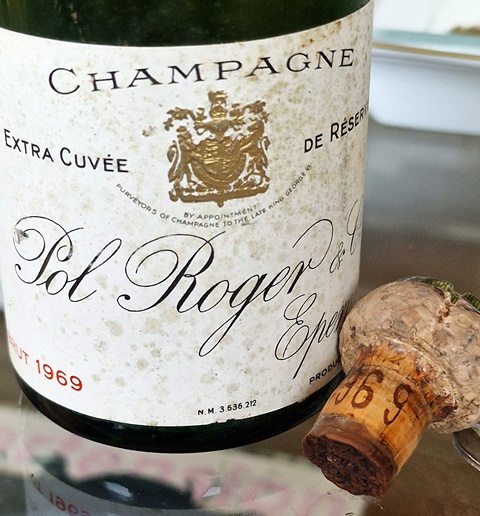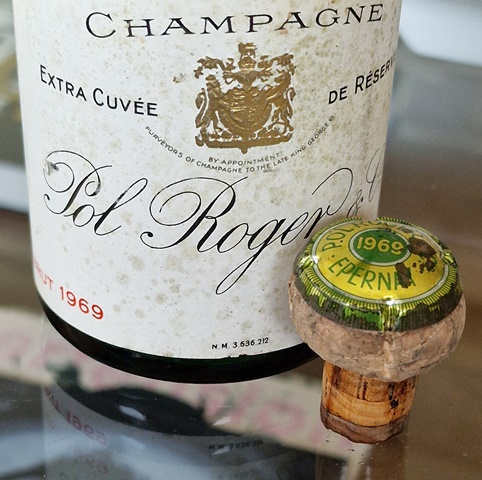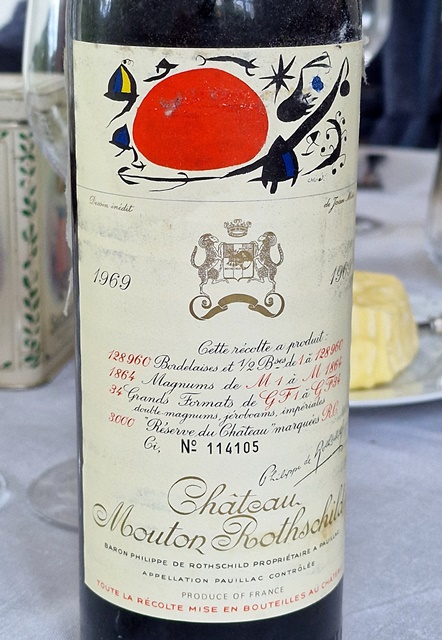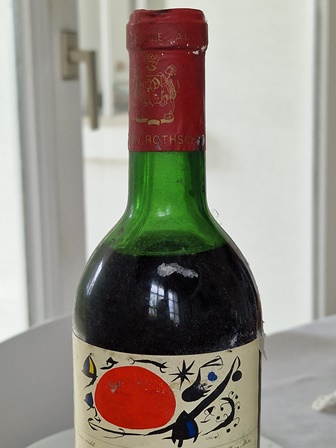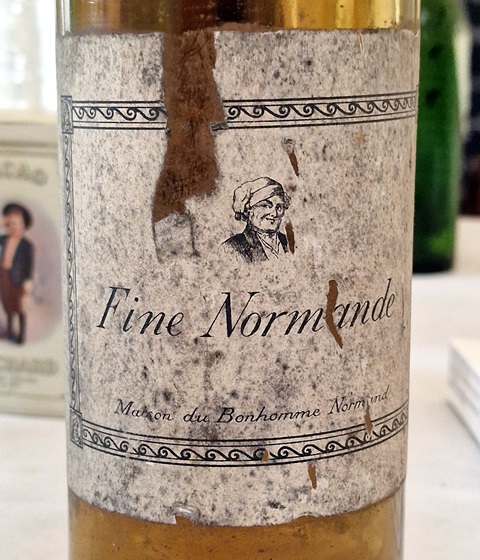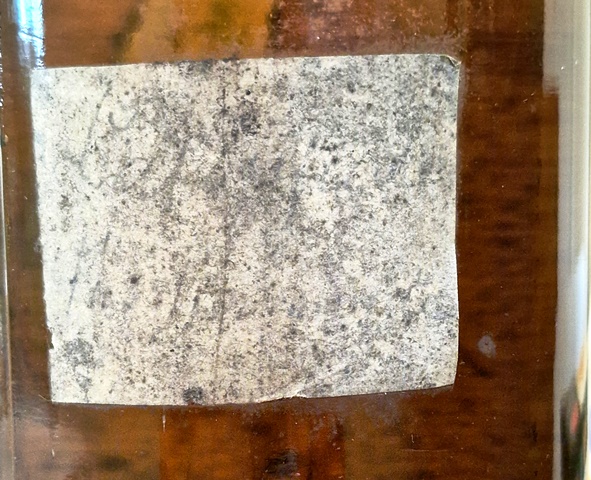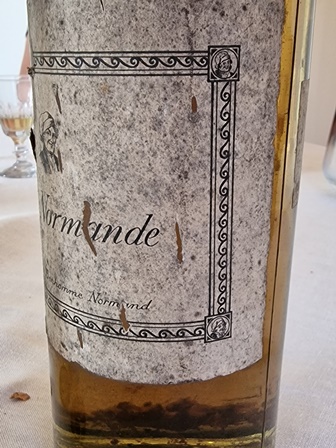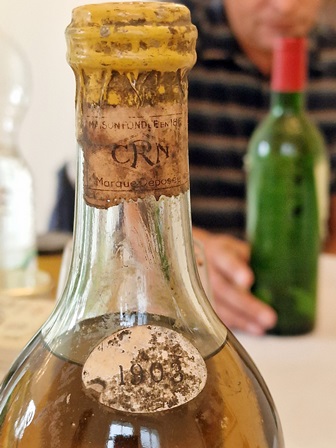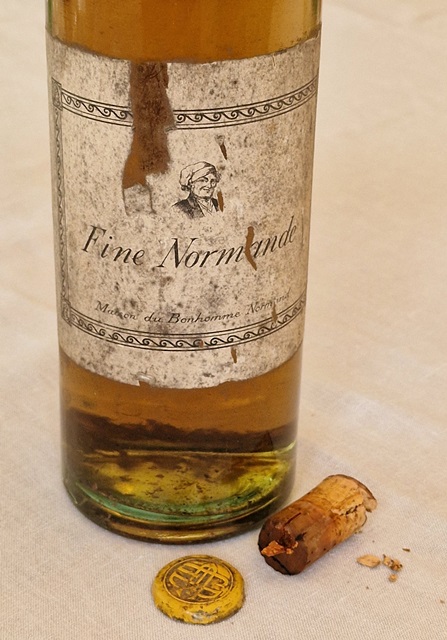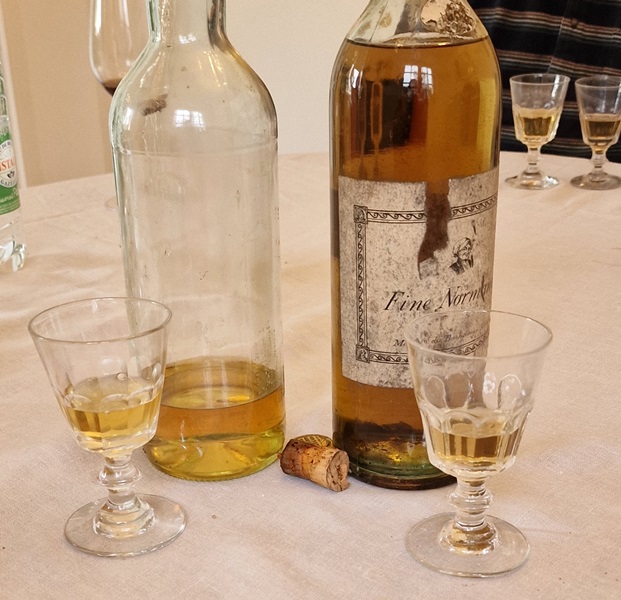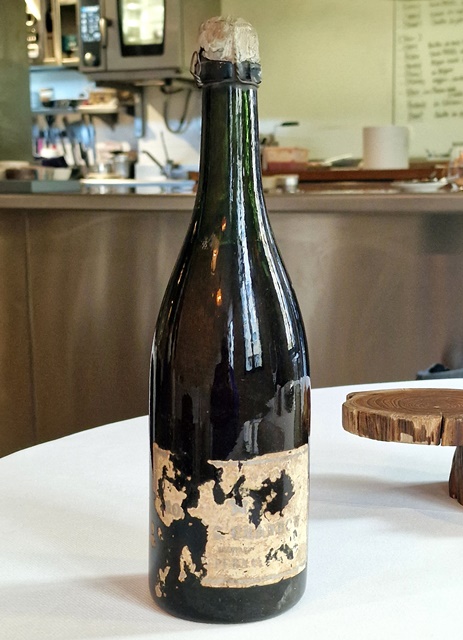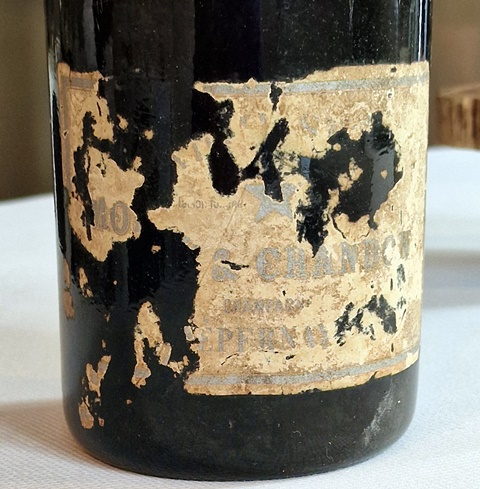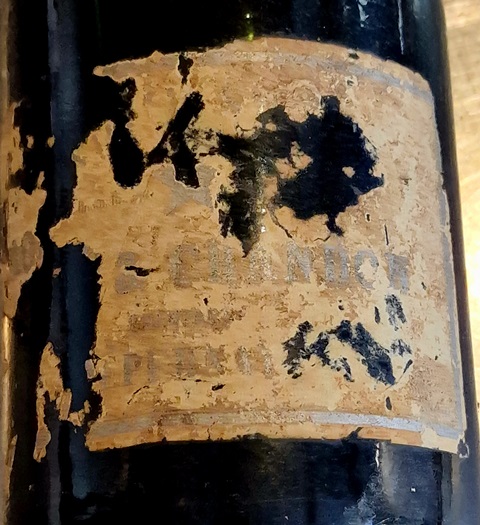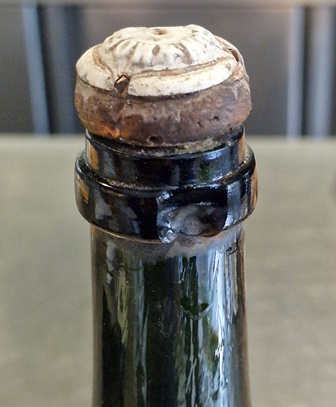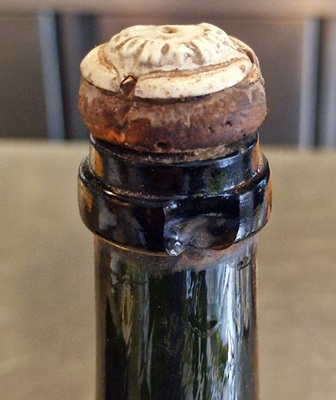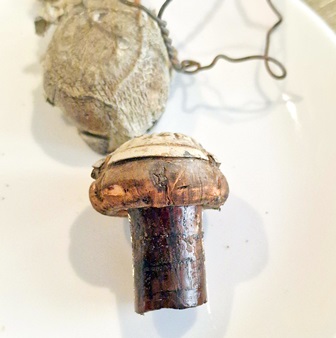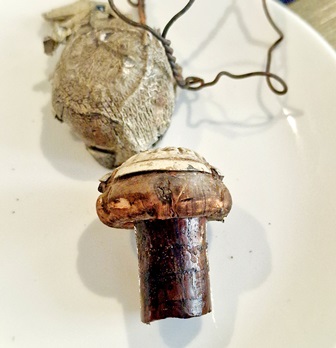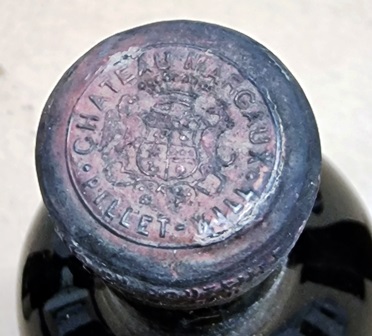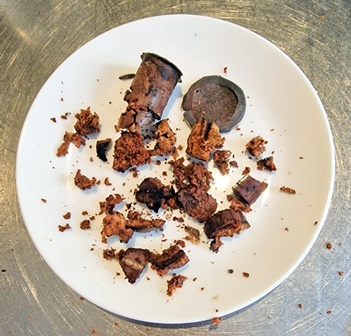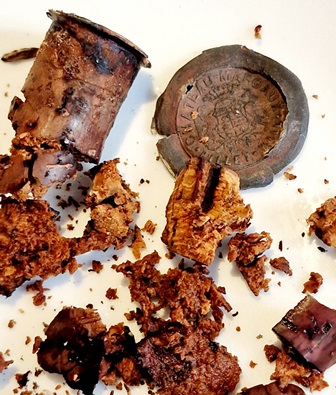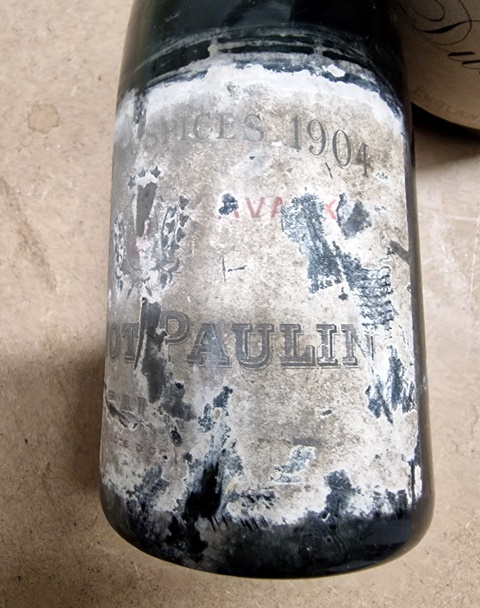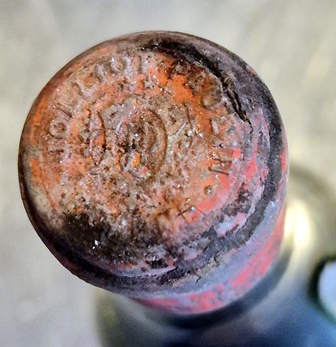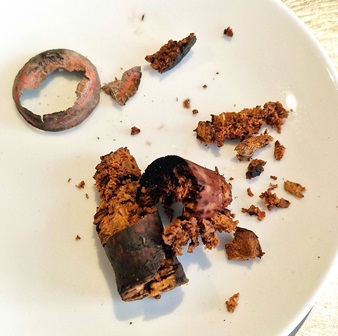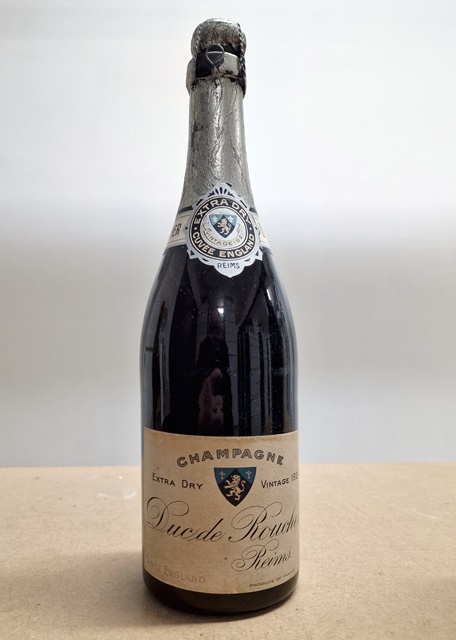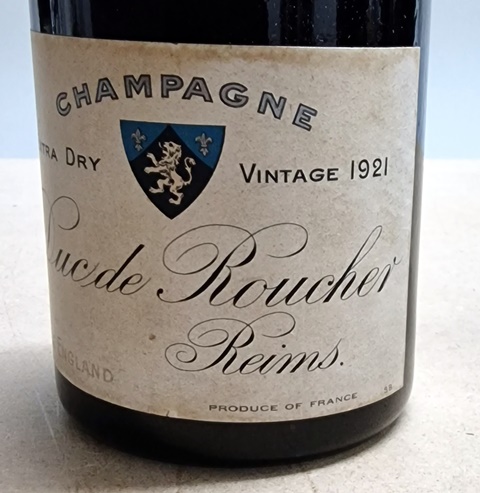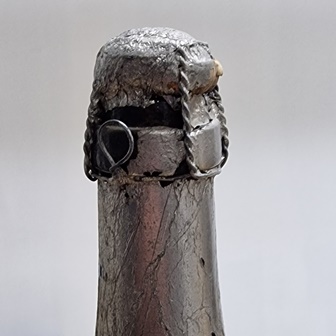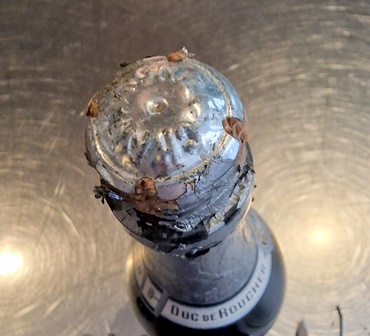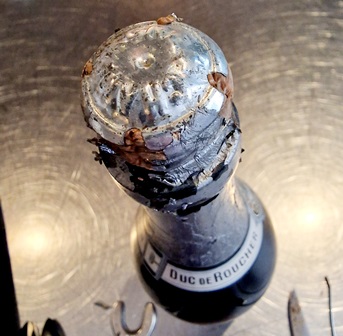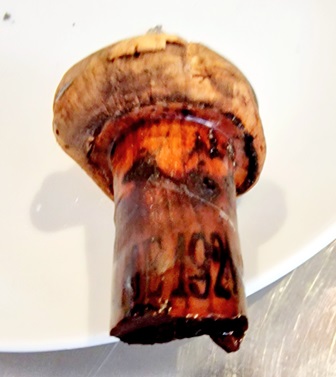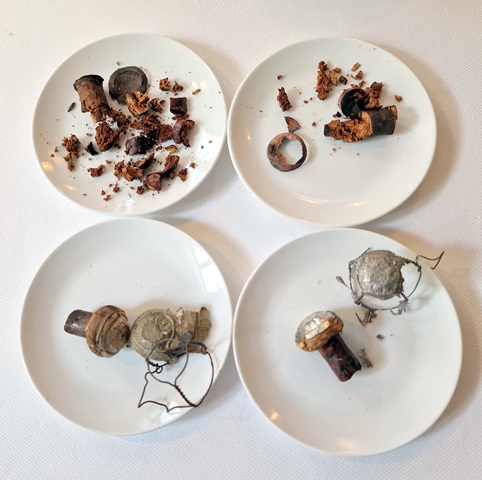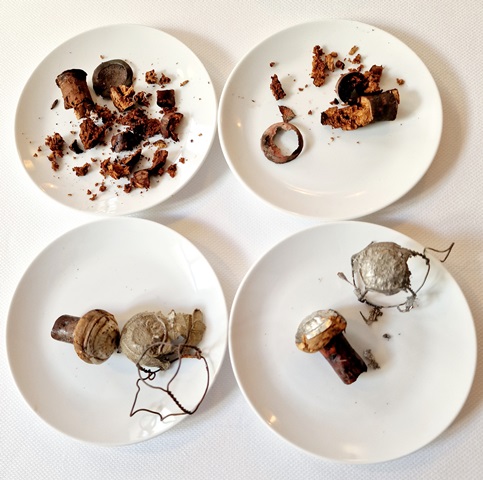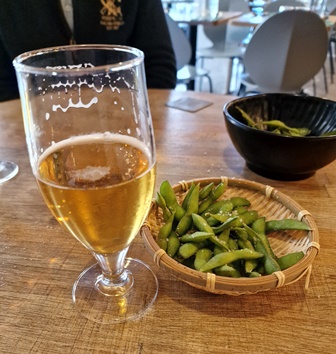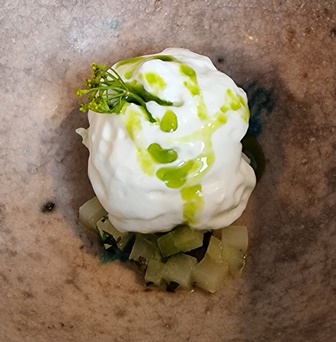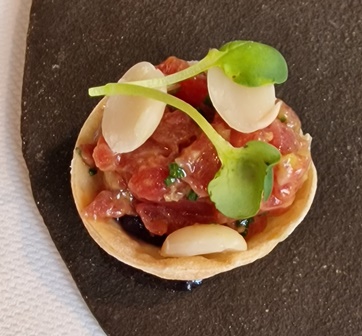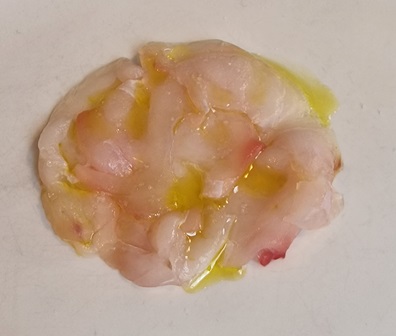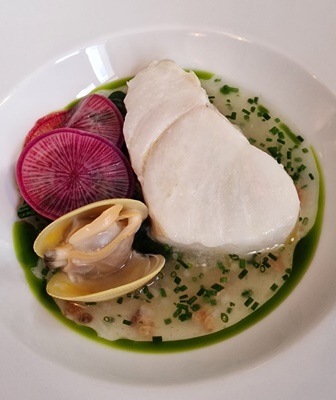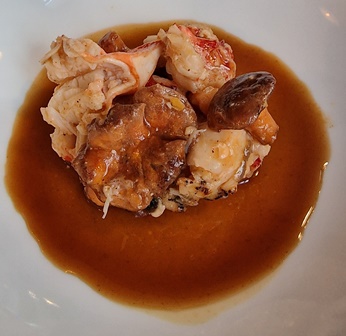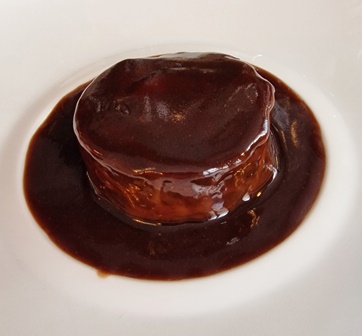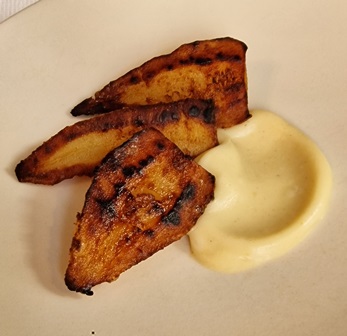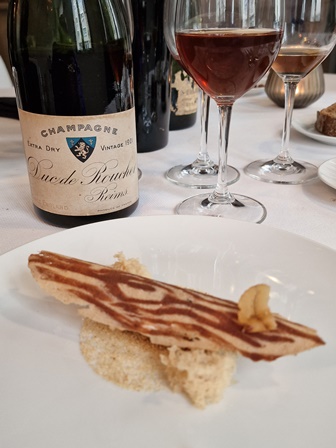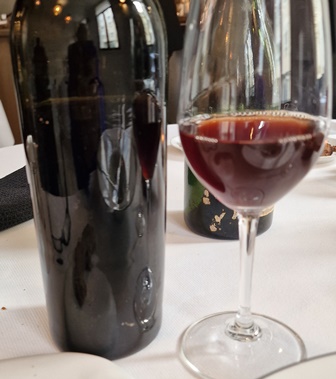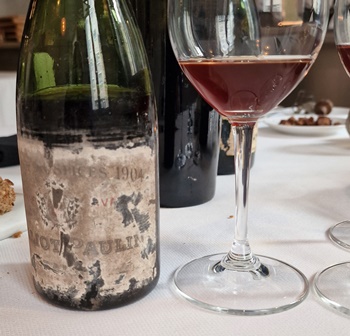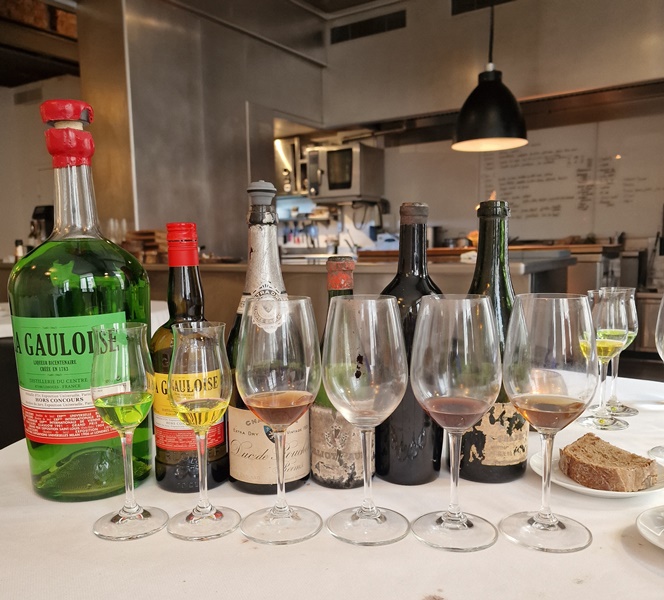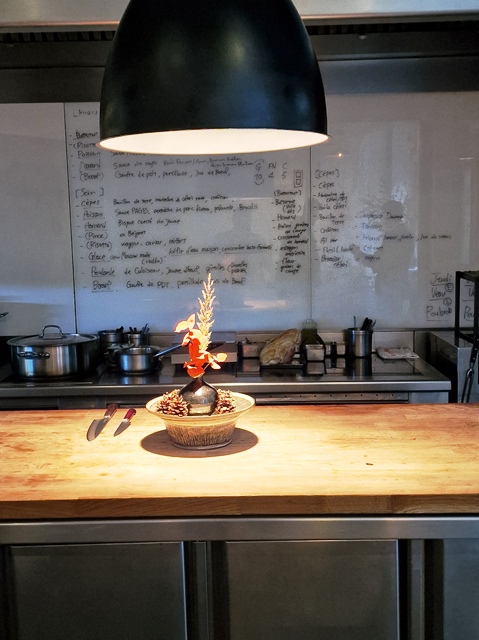(This translation of my notes concerning the 278th dinner corresponds to three articles in French)
The 278th dinner will be held tomorrow at the Château d’Yquem. I leave my home in the eastern suburbs of Paris at 7:30 a.m. to deliver the wines to the château so that they have time to rest there. To cover the first forty kilometers it takes me an hour and a half, as the traffic has exceeded the capacity of the car lanes. That we can imagine welcoming new populations to the Paris region is difficult to understand.
Trucks are extremely numerous on the highways and Eastern European countries must bless our 35-hour week law, because trucks from Poland, Hungary, Serbia, Lithuania and others represent almost all of those on the road, competed in the opposite direction by trucks from Italy, Spain and Portugal, because French trucks have almost disappeared, thanks to this wonderful law which made international transport impossible for French companies.
I am welcomed at the castle by the smile of Fatiha, who helped me during previous dinners at the castle and later by that of Laetitia, also present during these events. I salute Olivier Brulard, the chef de cuisine of the château, MOF 1996, with whom I had the 230th dinner in this place, five years ago now.
Olivier and I had already worked on the menu over the phone and we revised each dish together so that every detail will be perfect. Olivier understands well that each dish serves the wines, which means that each ingredient must be coherent in the construction of the dish. We understand each other half-heartedly and I like that. What impresses me is the care Olivier takes to find the best products. Whether quails or mushrooms, we are faced with the perfection of the product.
Chatting with Olivier is a real pleasure. Valérie Lailheugue, the historical secretary of Alexandre de Lur Saluces and now of Pierre Lurton comes to join me and we check all the details of the accommodation of those who will reside at the castle, the menus and all other details.
A tradition has been established since several dinners that I had at the château, which is that at lunch on the day of the dinner, I « invite » (in a way) to an informal meal those who make the wine and I share with them a very old Yquem from my cellar. At the last dinner I opened the 1893, a legendary vintage. Tomorrow, I will « receive » (so to speak) Lorenzo Pasquini, director of operations of the estate, Toni El Khawand, cellar master and Thomas Robert, head of cultivation. We therefore developed with Olivier Brulard the menu which will allow us to check some of the dinner dishes while adapting to the wines.
For this lunch I brought a Château Haut-Brion 1981 and a Yquem which I consider to be from a year close to 1880, because no year is readable on the label, the cork or the capsule. It turns out that I had put a photo of the label on Instagram which is a merchant label and not that of the domain. An astute reader found on my blog that I had opened a bottle with the same label in 2009. This bottle had a vintage: 1906. So we will probably drink a Yquem 1906 but I still believe that we are rather around from 1880.
It seems appropriate to open this Yquem now, because if I arrive at the château tomorrow around 11 a.m., the wine will not have enough time to develop. So I open it, with the intention of recorking the bottle. A new air will slowly blossom the wine. The scent of Yquem is extremely promising. The very black cap gives no legible indication.
The preparations having been made and the entire kitchen and castle team having been informed of the program, I go to Langon to the Maison Darroze hotel where I will sleep and where I will shortly have a dinner with three Americans who will participate in the dinner tomorrow at the Château d’Yquem.
I have known the Darroze house for decades, which enjoyed a fame that could be compared to that of the Auberge du Père Bize where political or entertainment celebrities flocked.
At 7:30 p.m., all four of us are at the table. Two American friends are my most loyal dinner guests and Bill, an incredible globetrotter, joined our group. He brought Un Château Guadet Saint-Emilion 2015, from an estate where he did the harvest.
For the aperitif, I choose a Champagne Philipponnat Clos des Goisses Extra Brut 2008 made from 55% chardonnay and 45% pinot noir. This champagne has a great personality. He is noble and lively, paving his way with conviction. It will gain with age in roundness and consistency, but it is already pleasant with its sharpness and its determination.
We choose a very generous four-course menu. Having the wine list in hand I see that the list includes very old bottles at attractive prices. A wine catches my eye. It’s a Beaune Grèves Domaine Ropiteau Mignon 1947. The head waiter to whom I showed this wine immediately jumped: « oh don’t take that, it’s very probably dead ». Audouze is stubborn. I ask him to go get it. He comes back with a 1947 wine which is not the right one and which I don’t like. He goes back to the cellar and brings the wine I wanted. The level has fallen but not abnormally.
I reassure the head waiter that I won’t make a fuss if the wine isn’t good. He seems reassured. I take out my tools and carefully I manage to extract the cork. Bill is surprised that I play the surgeon who « operates » on the bottle. The nose is quite dusty but not off-putting. There will not be enough time for slow oxygenation to do its job. Too bad.
The very pleasant foie gras goes well with champagne. The chef opens the Château Guadet Saint-Emilion 2015 and the nose gives me this thought: all wines of this age have the same scent. Indeed, it is rich, powerful, and all well-made wines have the same message at this age.
On the palate, the wine would probably not have much to say but fortunately the fish dish, the best dish of our meal, made the Saint-Emilion shine. The agreement is superb.
The main course based on poultry is far from having the level of the fish main course. The Beaune Grèves Domaine Ropiteau Mignon 1947 with its discreet and subtle scent is tired. But if we ignore his fatigue, he tells infinitely more things than the young Bordeaux. You just have to listen to its subtleties which are just waiting to blossom.
The delicious soufflé is pantagruelian.
We are far from the luster of the Darroze house during its splendor, but we had a very pleasant time with a superb fish dish and a tired relic from 1947.
After a restful night, I arrive at the Château d’Yquem at 11 a.m. Olivier Brulard has planned the lunch menu: lightly smoked roast Breton lobster on our vine shoots, golden apple and truffle juice / beautiful Méracq poultry, castle citrus fruits and oak lentins / Roquefort Le 12 AOP and Régalis César du Mont Royal / mango and tangy delicacies with passion fruit juice.
I want to open the Yquem 1874 which is planned for this evening with the following idea: This wine was reconditioned at the château in 1989. However, there have been some fake Yquems on the market presented as being reconditioned at the château but in fact made by counterfeiters. I would like my guests this lunchtime to give me their olfactory opinion on this 1874. And, smelling the two wines, I would like to reserve the best of the two for dinner. We would drink the one that seemed less brilliant to us.
Lorenzo Pasquini, operating director of the estate, Toni El Khawand, cellar master and Thomas Robert, head of cultivation, join me in the beautiful and large dining room that we will have this evening. Usually we took the smallest dining room but these three people who are so important to the life of the estate will use it for an olfactory practice session with an olfactory analysis teacher.
They accept the exercise that I propose to them. For my nose, I find that the minty impression of the 1874 is a little strong while the supposed 1906 with the original cork opened yesterday is very comfortable and consistent with what we expect. The three are unanimous in declaring that the 1874 conforms to what it should be because we often find this beautiful minty trace in wines from this period.
It seems obvious that the 1874 remains assigned to dinner. We will therefore drink the probable 1906.
I go with Lorenzo to the cellar to choose a wine. It will be Yquem 2001, this vintage that I love. I wanted the lobster to host the red wine and the Yquem poultry, but Lorenzo prefers the opposite order. ‘No worries’ as we say more and more often in urban exchanges and not only in the south of France.
The Château d’Yquem 2001 is a very great Yquem but it has become more seated, comfortable, while I loved its wild side which almost made me faint when I drank it for the first time during its launch. The lobster is of exceptional quality.
Château Haut Brion 1981 is from a vintage that has been underestimated for far too long. This balanced wine is of certain solidity. He is frank and very pleasant and deserves much more than the image given to him. For decades I have considered 1981 a great year.
The Château d’Yquem 1906 is captivating. Let’s imagine a flying saucer that sends waves in all directions. This Yquem is like that. It is round and sends complexities in all directions. It is magical and I fall under its spell, because despite a slightly dark color and a discreet fragrance, it is a festival of emotion. And I realize that it could enter the circle of the most beautiful Yquems that I have drunk. It’s not as big as the magical 1861, but it’s not far off.
I will have advanced the science of Olivier Brulard who defended Roquefort as a partner of Yquem. I told him that Roquefort is not suitable and that Stilton is the ideal companion. The stilton won by technical knockout in the first round. There was no match.
Yquem was brilliant at all times and although 1906 is the natural lead since I drank one from a bottle with the same label, I think this wine is more in keeping with the period around 1880.
Lorenzo, Toni and Thomas go to their olfaction session while I will now open the dinner wines in the beautiful dining room where we just had our lunch. I am in an extremely serene and happy mood and I put a lot of attention into my actions when removing the corks.
Y d’Yquem 1960 has the scent of a great wine with strong botrytis. As this is Y’s second vintage, the sorting of the grapes had accepted a lot of botrytized grapes. This scent is engaging. The Jurançon 1993 has a nose of lychee which is of significant intensity.
The Hermitage blanc 1928 from an unknown domain has a discreet nose which will blossom and promise. The Cheval Blanc 1934 has an extraordinary nose and is so full that I decided to put a glass stopper to keep this perfect perfume. The Ausone 1985 has a rich scent but less bright than that of the 1934.
The noses of the two Nuits Saint Georges are large. That of Henri Jayer is extremely subtle.
I had announced a Chambertin Coron Père & Fils 1929 because I have several, but I had read too quickly. On the torn label, the word Chambertin is on the right, which implies that it is preceded by Gevrey or Charmes. As for the name of the merchant, the top of the capsule indicates René Téze in Ambrières. The perfume seems to me to be one of the most beautiful that I have opened, except Cheval Blanc.
The power of the nose of Château Chalon 1945 is unrivaled. The 1934 Yquem recorked at the château and remaining at the château, which is the contribution of Pierre Lurton, seems to me to be incredibly young and has a lively scent.
I now open the champagnes. The Dom Ruinart 1990 gives me a nice spritz even if it is not thunderous. The two older champagnes are dirty under the cap and their corks break when twisted. The nose of the Veuve Clicquot 1947 is very discreet and that of the Dom Pérignon 1962 has a beautiful personality.
Throughout the opening, I was focused, looking for the right gesture and I was amazed to see that all the wines were almost perfect. Heaven was with me.
The guests who have rooms are arriving little by little. Quickly, I’m going to try to rest before welcoming the guests for a tour of the castle and a tasting before dinner.
The 278th dinner is held at the Château d’Yquem. I brought the wines yesterday, I opened them this afternoon. Participants who have a room at the castle arrived at 5 p.m. The appointment for the visit to the castle is scheduled for 6:30 p.m. but we are informed that Pierre Lurton, president of Yquem and Cheval Blanc will be late.
So it is Léo who guides visitors to the castle, who takes us to the cellars and praises the quality of the management of the vines, the organization of the harvest so that the botrytis has its best effect.
Pierre Lurton joins us for the tasting in the beautiful tasting room. We begin to taste the Y d’Yquem 2021 which despite its age has a magnificent presence and freshness which make it a remarkable wine at this age of its life.
We were supposed to taste the Yquem 2017 then the 2009 but it is reasonable to only taste the Château d’Yquem 2009 because we have a long dinner program. We had already tasted the 2009 during the last dinner in Yquem. He has retained this astonishing freshness and an obvious joie de vivre. It’s a great Yquem with a bright future.
We return to the large living room for an aperitif. In the program sent to registrants there were two champagnes but I felt that it was necessary to add a champagne that was easier to understand, to prepare our palates for future wines. So we start with a Champagne Dom Ruinart 1990 which I love because 1990 was a year of total success for Dom Ruinart.
The appetizers are: Imperial Beluga Caviar (1st exceptional Beluga Caviar, 100% French and matured in New Aquitaine) / king crab, morning yuzu and garden flowers / parmesan shortbread, Culatello di Zibello.
Champagne combines the freshness of youth with the serenity of success. It’s pure happiness. The appetizers are, like the cuisine of chef Olivier Brulard, based on quality products. The Dom Ruinart 1990 is a very great champagne that I cherish.
There are twelve of us, including Pierre Lurton, president of Yquem, two Americans who are my most loyal dinner guests, a couple of French friends, a globe-trotting American, an American of Spanish origin, a Spaniard, a Bordeaux native, a French man with origins in Eastern Europe and the only new one of my dinners who lives in Portugal. The dinner will be held in English but Pierre Lurton, very fit and full of humor, will tell us some stories and puns that are difficult to translate.
We sit down at the table. The menu is distributed to everyone. It is written as follows: the best of Landes foie gras, three gourmet recipes to taste / Scallops cooked naturally in a shell with Alba white truffle, « Served like a Garden » / silky turbot « Belle Meunière », porcini mushrooms with Bordeaux corks picked with dew / special « well-bred » quail from Pierre Duplantier, return from the vines / Girondin game venison, spicy autumn casserole, pepper sauce / 18 Month vintage Comté / stilton, Ford farmhouse cheddar and English Shropshire selected by Dominique Bouchait MOF cheese maker / Ente plums from the new harvest enhanced with château wine, candied orange zest and « Candi » hazelnuts.
It is a menu based on the highest quality products and we have worked with the chef to ensure that every ingredient is completely consistent with the wines which must be highlighted by the dishes.
Sébastien served the wines, which is not easy as there are so many requirements.
Champagne Veuve Clicquot 1947 and Champagne Dom Pérignon 1962 are served with the first course of foie gras. They are very different. Dom Pérignon is more welcoming and comfortable while Veuve Clicquot is much more tense and complex. It’s hard to compare them but both are superb. The votes will go towards 1947.
On the next course I have planned three wines, one of which I added to the planned program, the Jurançon and I must say that on the delicious shells I am very proud to have planned these three wines. Because the 1960 Y d’Yquem is absolutely glorious. This is the second vintage of Y, the first being 1959 and this one is imperial, with a marked botrytis which gives it a nice width.
The Jurançon Domaine de Souch dry 1993 which follows it has a nose of lychee and a strong energy of straight and dry but great intensity. Highly fruity with green vegetables, it traces its path and it is then that the Hermitage Blanc 1928 appears, with a subtle and delicate nose, a racy and accomplished taste, calm and serene, which calms the passion of Jurançon. You can switch from one to the other because the shell accepts all three wines, and this variety of tastes is magical. I think I had a great intuition to create this merry-go-round of tastes where the Y is royal, the Jurançon scoundrel and mad dog, and the Hermitage has the wisdom of the ancient and a remarkable serenity. For me, it’s a big emotional moment of the meal.
There are occasions in my life as a wine lover when I encounter perfect wines. Château Cheval Blanc 1934 is one of them, because it reaches a level of perfection that we feel. It is balanced, rich, obvious like a riddle that has been solved.
Next to it, the Château Ausone 1985 is a beautiful ‘jeune premier’, rich and expressive, but it is clear that the Cheval Blanc steals the show. Turbot shows us that it is a fish made for red wines and porcini mushrooms are real sweets because they are so good.
Olivier Brulard showed me the splendid quails yesterday. They have a magical flesh that will allow two wines to coexist. The Nuits-Saint-Georges aux Murgers Méo Camuzet 2000 is young and solid, readable and frank. He is rich. The Nuits-Saint-Georges aux Murgers Henri Jayer 1981 is all delicacy and subtlety. One would have thought that the 1981 would have been much more popular due to the fact that the winemaker is Henri Jayer who is crowned with glory, but to my great surprise, the Méo Camuzet will be in the votes of six guests, and the Henri Jayer also of six guests. They therefore deserved to be associated with quail, ideal for those two beautiful, expressive and frank Burgundies.
The Gevrey-Chambertin René Téze à Ambrières 1929 is served with venison. I have a particular love for the 1929 vintage which I consider to be the greatest of the 20th century. This wine has a balance that makes it almost eternal. It would have been my favorite if it weren’t for the devilish Yquem wines. The venison is truly made for such an accomplished wine and it is sweetness upon sweetness and excellence upon excellence.
For Château Chalon Jean Bourdy 1945 I did not try to complicate things and the delicious Comtés are the best companions for this wine of rare power and very strong alcohol. This 1945 is a great success. He won’t attract many votes because he is exactly what is expected of him. There is no element of surprise.
The two Yquems will accompany two dishes, a cheese dish and a dessert made with subtle plums. The Château d’Yquem 1934 is Pierre Lurton’s contribution to our dinner, the vintage of which is that of the birth of Alexandre de Lur Saluces who has just left us this year. We have a strong thought for this great man who was a great character in Sauternes but also in the world of wine. This Yquem kept at the château and reconditioned at the château is very clear with a golden tone and is characterized by incredible youth. He is as lively as a wild horse and his imprint is overjoyed.
The Château d’Yquem 1874 that I opened before lunch had been reconditioned in 1989. The three people involved in the production of Yquem wines confirmed the sincerity of this wine. It is dark and on the palate it is absolutely rich and expressively noble. It’s fireworks in the mouth. He is so attractive that we are dazzled. It is 149 years old and its vigor is that of a young wine. What happiness.
I feel that the guests are captivated by the fact that the fourteen wines were all at the peak of what they can be and I admit that I am also struck by the perfection of these wines. I’m sure my opening method works wonders since I say it all the time, but at this point it’s almost unreal. It seems to me that the atmosphere and my joy of being in Yquem will have played a role in the behavior of all the wines.
It’s time to vote for our six favorite wines. Usually I ask for a vote of five wines but as there are fourteen a vote of six wines seems possible. Some people said that these votes are of little use, but when they saw the result they understood that these votes are very enlightening.
Seven guests put the Yquem 1974 first, four put the Cheval Blanc 1934 first and the Bordeaux resident put the Henri Jayer first, which proves a great open-mindedness. Thirteen wines had at least one vote which is remarkable. The one who didn’t have any is the Dom Ruinart and this is understandable for two reasons, we drank it in another room and we drank it first. It is logically easy to forget.
The consensus vote is: 1 – Château d’Yquem 1874, 2 – Château Cheval Blanc 1934, 3 – Y d’Yquem 1962, 4 – Nuits-Saint-Georges aux Murgers Henri Jayer 1981, 5 – Château d’Yquem 1934, 6 – Hermitage Blanc 1928 and 6 tied: Gevrey-Chambertin René Tèze & Fils 1929.
My vote is: 1 – Château d’Yquem 1874, 2 – Château Cheval Blanc 1934, 3 – Gevrey-Chambertin René Téze in Ambrières 1929, 4 – Y d’Yquem 1962, 5 – Nuits-Saint-Georges aux Murgers Henri Jayer 1981 , 6 – Hermitage Blanc 1928.
The combinations food and wine were perfectly relevant. It is difficult to choose the best pairings. I think the most beautiful is the turbot with the two Bordeaux, and the scallops with the three white wines which formed a magical trio.
Olivier Brulard was very happy to design dishes for the wines and adapt them in collaboration with me. I was very happy with this collusion with him. And his art of choosing the right products impressed me.
The Yquem team is experienced in providing great service. The whole team was happy and motivated.
But before putting an end to this story, there is one thing that pleases me the most. I have always preferred Yquems with original corks to Yquems which have changed corks during their life. The Yquem 1861 with the original cork, which seems unreal as a wine whichkeeps the same cork for one and a half century seems impossible. This 1861 coming from my cellar, is the greatest Yquem that I drank in 2006 at Château d’Yquem, because of its original cork, because there has an unrivaled authenticity.
At lunchtime, when we could smell the Yquem 1906 with the original cork and the 1874 reconditioned in 1989, it appeared to us that the 1874 had to remain on the dinner program and we drank the 1906 (which at my meaning is rather to date from around 1880) at lunch.
Well, while the 1874 won hands down at the dinner, for my taste, the 1906 (or 1880) is far superior to the 1874 because of the special taste of uncorked Yquem, and I would rank this Yquem in the Yquem firmament which I drank, in 2nd place after the 1861 or at least in the first five, because of its original cork and an unrivaled subtle complexity.
I have drunk incredible vintages of Yquem, and I only want to discover more.
This 278th meal with passionate and charming guests, with a very motivated chef and unrealistically perfect wines is one of the greatest dinners I have organized.

